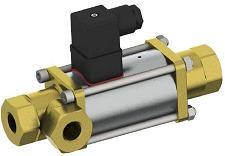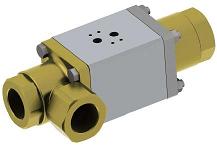
Solenoid Valve Technical DataSolenoid Valves For Vacuum or Low pressure applications such as header tank pressures or closed loop systems with little or no differential pressure across the valve we use a "Zero Rated" Solenoid Valve. These will work with zero or little pressure differential. There are two main types of Zero Rated Solenoid valves "Direct" and "Assisted". An "Assisted" Solenoid Valvehas an attachment from the armature that mechanically lifts the diaphragm or piston off its seat thus causing the valve to open even if there is no or little pressure from the media - Good for Zero to Medium Pressures with good flow capabilities. A "Direct" Solenoid Valveuses the armature directly over the valve seat as the mechanical means to Directly open and close the valve regardless of the media pressure - Good for High Pressures with normally Lower flow capabilities. A Solenoid Valve for high pressure or vent to atmosphere applications can use a "Servo Assisted" or "Pilot Operated" Solenoid Valve sometimes called a "Diaphragm" valve. A "Servo Assisted" or "Pilot Operated" Solenoid Valveuses the pressure difference across the Solenoid Valve (Difference In Pressure from the inlet to the outlet ports) to do the mechanical work of lifting the diaphragm or piston. This is achieved by controlling the pressure above the diaphragm or piston via a pilot system that can release this pressure through to the outlet port of the valve down stream. The inlet pressure can then overcome the now reduced pressure above the piston or diaphragm forcing it to lift open allowing flow and vice versa. Most valves of this design require between 0.2 to 2 bar pressure difference to operate correctly, normally about 10% of the working pressure. Choice of valve size is of paramount importance in achieving the correct pressure differential as too much or too little could adversely affect the operating function of the valve.
Water Hardness the affects on Solenoid Valves. |
|

